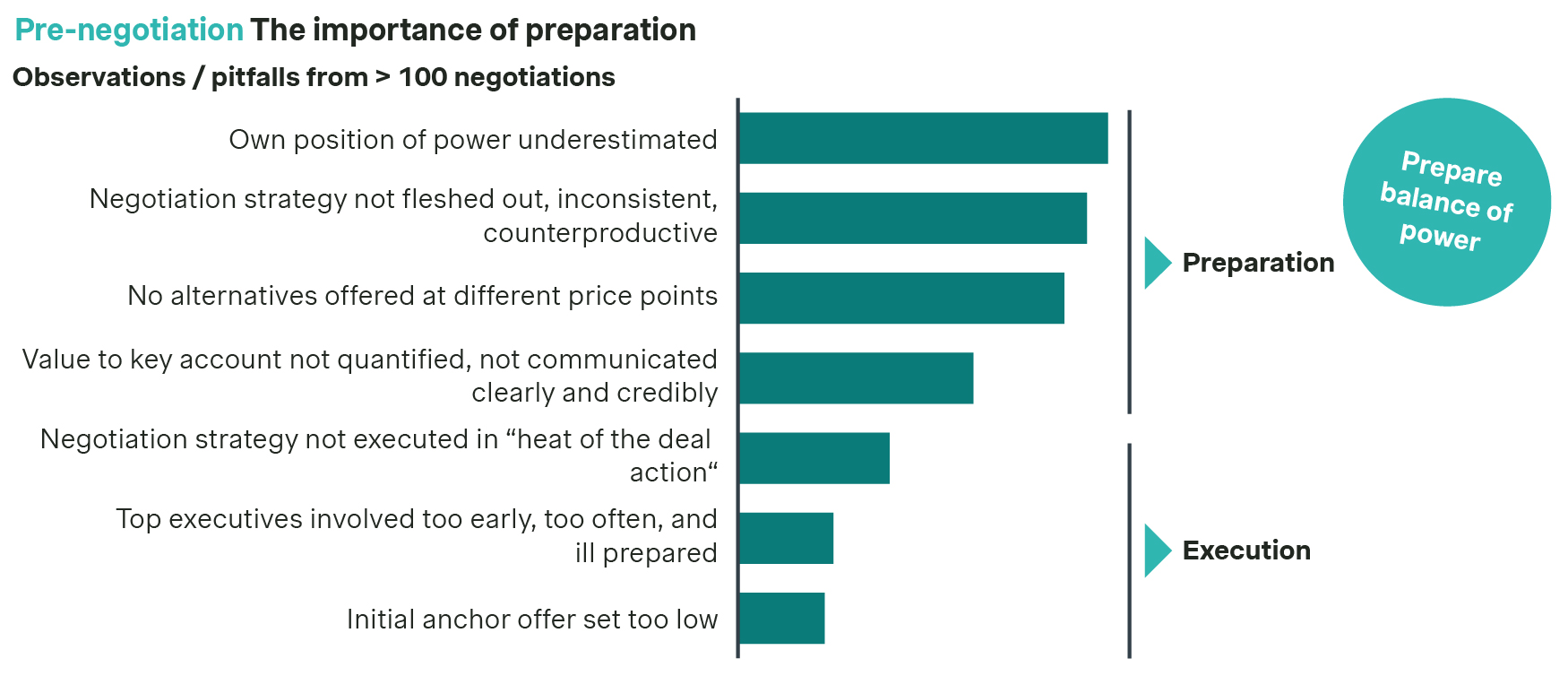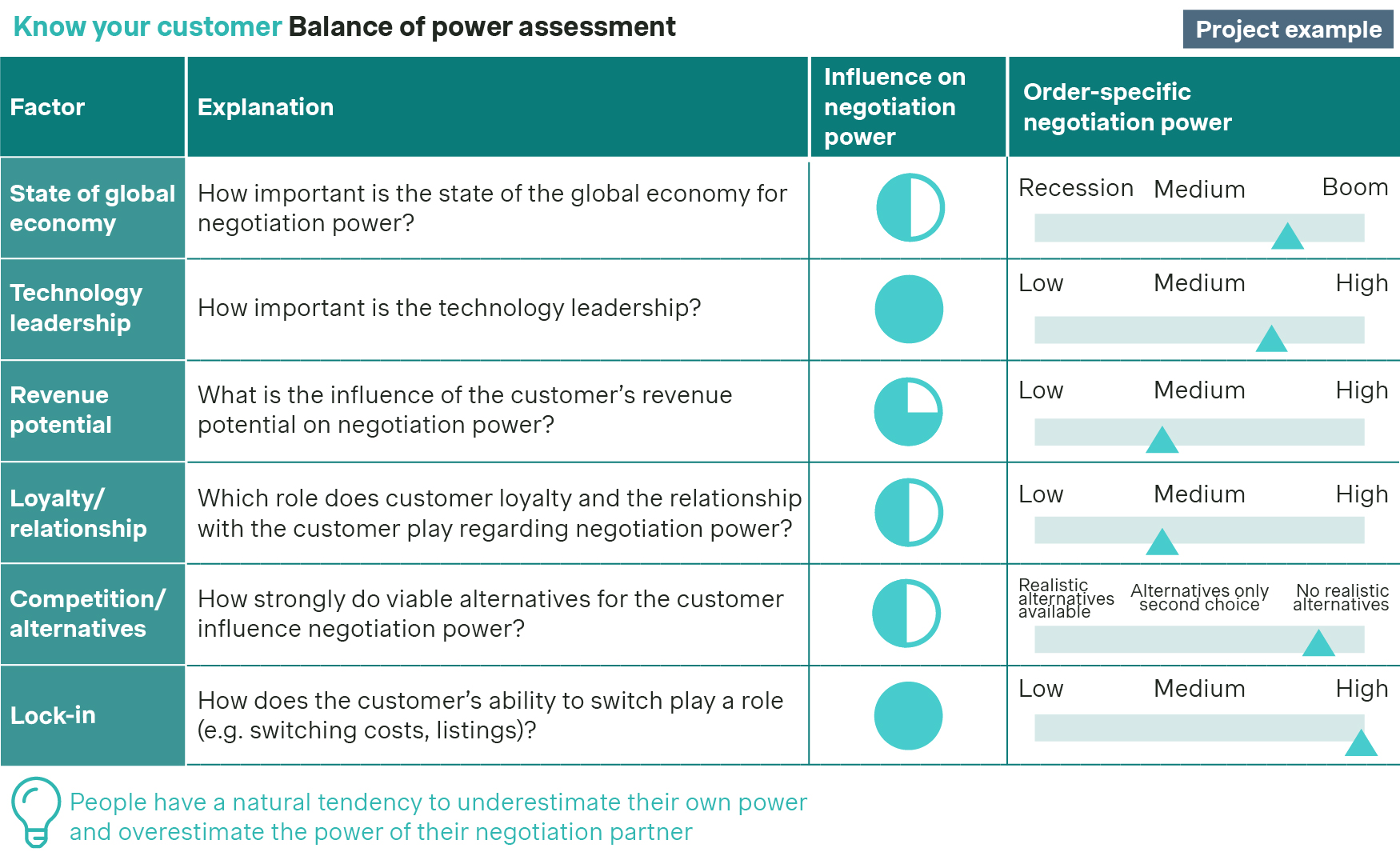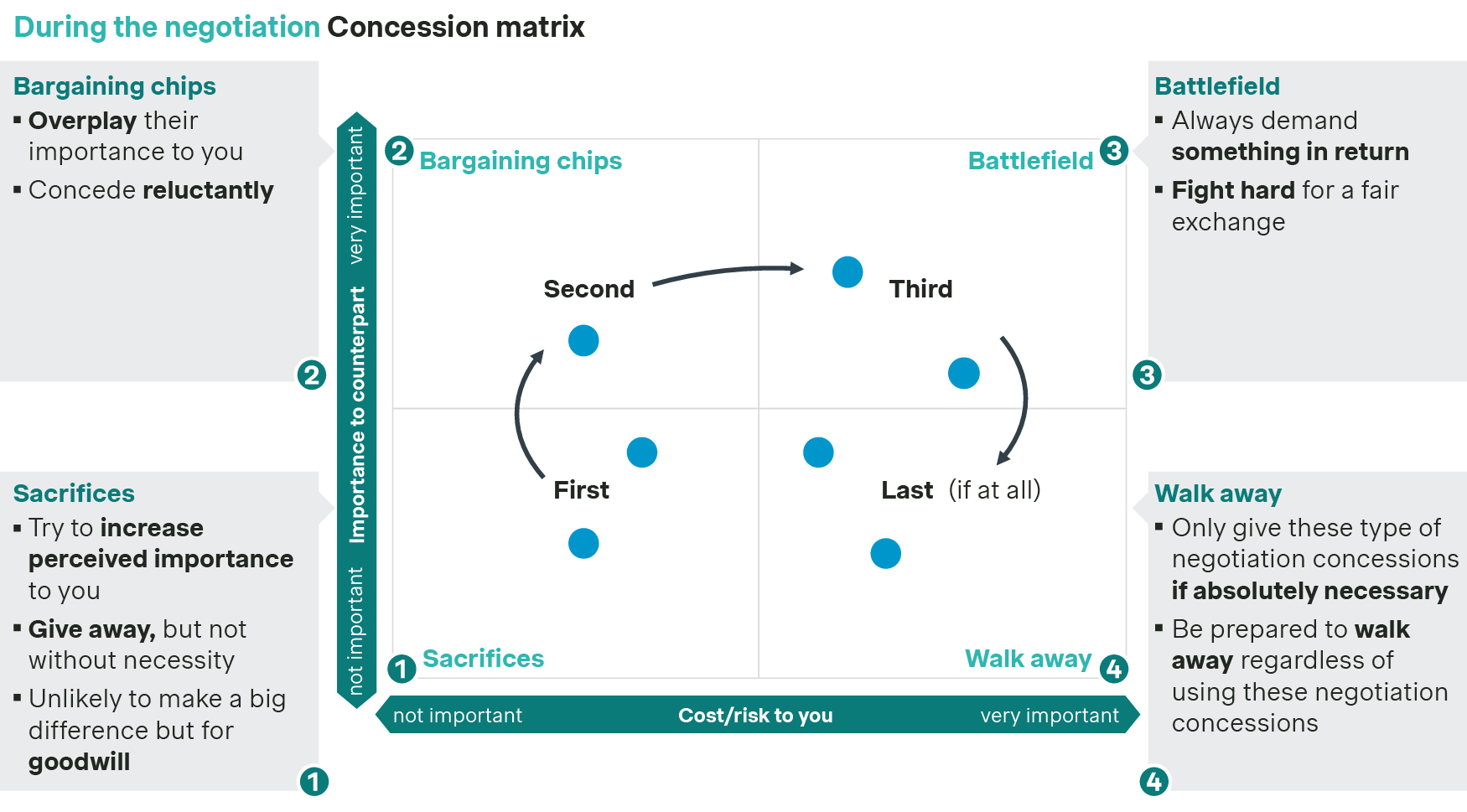The global economy has faced significant challenges over the past two years. Inflation and high interest rates have introduced uncertainty into the business climate. In this environment, mastering B2B sales negotiations is crucial for improving business performance.
Our recent B2B sales study indicates that the fastest growing companies invest the most in their sales function. The best-selling sales teams nurture more personal customer relationships. Here, robust negotiation skills are indispensable for securing profitable volumes. This article demonstrates the importance of effective negotiations and shares essential best practices for successful B2B sales negotiations.
Importance of negotiations in B2B sales
Sales negotiations are essential for B2B companies. They enable you to customize complex deals, fostering trust and long-term relationships. Effective negotiation leads to successful deal closures, increased satisfaction, and enhanced loyalty, benefiting both your business and your customers.
Our B2B sales study shows that investing in sales excellence boosts company growth. What’s more, our expertise has helped companies achieve 10% revenue growth within the first year after working with us. This shows the impact strong negotiation skills can have on your business's growth.
The negotiation process in a B2B sales process consists of three stages:
- Pre-negotiation
- During the negotiation
- Post-negotiation.
You can excel in each of these stages by considering the best practices from our extensive project experience.
1. Pre-negotiation: The importance of preparation
We often see that businesses do not enter negotiations (well) prepared. Or they underestimate the complexity of negotiations. However, preparing fosters confidence and significantly enhances the likelihood of a successful outcome. Your sales professionals must invest sufficient time and effort in preparing three best practices: know your objectives, know your value, and know your customer.

Know your objectives
Establish negotiation objectives upfront, setting specific goals like securing a particular contract value, entering new markets, or forming strategic partnerships. This early goal setting provides a clear roadmap for your negotiation strategy aligned with broader business objectives. Additionally, well-defined objectives help you determine the negotiation's target point and when to walk away from the table.
Know your value
B2B companies often struggle to fully communicate the value of their products as they are more technically oriented. Sales teams should focus on preparing knowledge about how offerings benefit potential customers and on making the value explicit, shifting the negotiation away from price. A tool that can help you make the value of your product explicit is a MOCA (Matrix of Competitive Advantages). A MOCA displays value drivers of your product that are validated by your customers and shows where your competitive advantages lie. Understanding your value helps articulate your differentiation from competitors, creating a competitive edge. To demonstrate this value, prepare proof points such as credentials or the MOCA.
Know your customer
Do you know your customers' specific needs and pain points? Understanding these allows you to tailor your offerings and increase the likelihood of closing the deal. Additionally, it's crucial to understand the balance of power between you and your customer. Sales teams often overlook this or only consider it implicitly, underestimating their own power and overestimating the customer's.
Assessing the balance of power explicitly helps you view it objectively. Use scoring criteria such as "importance of the deal," "competitive environment," "differentiation of your offering," "history of bargaining power," and "relationship with the buyer." This objective assessment boosts your confidence, sets realistic expectations, leverages your strengths, and identifies where you can assert influence in your negotiations.
In conclusion, thorough preparation to know your objectives, understand your value, and know your customer is essential for successful negotiations. Investing in these best practices helps achieve better outcomes.

2. During the negotiation: Preparation meets action
The actual negotiation phase is where your preparation meets action. This stage determines whether months of research, planning, and relationship-building culminate in a successful agreement with your customer. Here are the key best practices and techniques that will help you create success during your upcoming negotiation.
Argumentation techniques
During negotiations, accurately communicating your product's value drivers to the customer is crucial. We often find that discussions rely on gut feelings rather than data or a value-based pricing structure. Clearly communicating your value during negotiations is essential for effective argumentation. Using battle cards – which include typical objections and counterarguments – is another effective technique for managing objections. Battle cards help sales teams stay prepared and maintain control of the negotiation by providing structured responses. They enable sales representatives to address customer concerns promptly and effectively, increasing the chances of reaching a successful agreement. For example:
Objection: Price is too high
Counterargument: Our product's superior quality justifies the price point. Here are the key features that set us apart from competitors. Additionally, we offer flexible payment options to accommodate your budget constraints.
Effective communication is also vital, supported by the LISTEN Framework. The acronym stands for six levers: listening actively, interpreting accurately, speaking wisely, targeting progress, engaging effectively, and narrating memorably. Leveraging this framework into your sales negotiations can significantly enhance your ability to connect with customers, understand their needs, and provide tailored solutions that drive sales success.
Concessions
Sometimes, concessions are necessary to successfully close a deal and reach a mutually beneficial agreement. To prioritize concessions effectively, we recommend using a concession matrix. This matrix considers not only product aspects but also factors such as contract duration, packaging charges, and services. Here is how to utilize a concession matrix:
- Start in the sacrifices box: these are concessions that create goodwill without making a significant difference if you lose them
- Move on to the bargaining chips: these concessions are unimportant to you but important to the counterparty. Use these wisely!
- Next are battlefield concessions: these should not be made without a fight and a concession from the other party in return
- Last are the walk-away concessions: only make these when necessary. When arriving in this part of the negotiation matrix you need to be ready to walk away if required.
It is essential to prepare and align the order of these concessions in advance with your sales team to ensure they are utilized in the right stadium of the discussions.

Persuasion techniques
The final best practice during negotiations involves persuasion techniques, which can effectively influence outcomes in your favor. Three impactful persuasion techniques include:
- Anchoring: Use an ambitious offer (as ambitious as possible without being ridiculous or offensive) at the beginning of the negotiation. This then becomes an anchor which your counterpart will use to judge later options.
- Presenting alternatives: Give customers multiple options, which can help frame your desired contract in a more favorable light. For example, by positioning your desired contract between a lower-value and a higher-value option, the desired contract appears more balanced and favorable.
- Social proof: Leverage the influence of other customers’ opinions and experiences to build trust and convince your negotiating partner of the value of your product. This can be achieved through direct or indirect references, such as testimonials, reviews, endorsements, and case studies.
In conclusion, effective negotiation requires strong argumentation techniques, strategically prioritized concessions, and effective persuasion to align your preparation with action. Mastering these practices can enhance your chances of reaching successful agreements.
3. Post-negotiation: The power of reflection and analysis
The post-negotiation phase is critical for your long-term success and sustainability with your recently acquired customer. After completing the negotiation and signing the contracts, shift focus to managing its performance and improving your next negotiations.
Track, communicate, and manage
After the negotiation, we often see that companies forget actively tracking and acting on results. Always document the negotiated agreement and actively manage its performance. This involves overseeing execution, tracking and communicating progress, and solving potential problems that your customer might have. Remember that negotiations never truly end; clients may request changes or additional services during execution, which require new agreements and hence discussions. Staying proactive and engaged thus helps maintain a sustainable business relationship and allows you to identify new opportunities for collaboration.
Document, learn, and improve
You can use past negotiations to learn from and improve your next negotiations. Documenting detailed records of past negotiations not only help prevent misunderstandings and disputes, but it can also lead to more successful negotiations in the future. Based on historical data you can create a win/loss analysis to help you understand which factors contributed to winning or losing the negotiation. By systematically examining why deals were won or lost, you can refine your negotiation strategies, address weaknesses, and capitalize on strengths. Alongside documenting the results of the negotiation, you should also ensure sales teams gather experiences from past negotiations. Here the aim is to gain diverse perspectives, learn from each other, and if possible, from the customer.
This iterative process of documenting and reflecting on past negotiations as well as analyzing win/loss drivers helps to avoid mistakes and builds on strengths, making each subsequent negotiation more effective.
Start mastering your B2B sales negotiations today
At Simon-Kucher, we understand that mastering sales negotiation in the B2B landscape is no small feat. That’s why we're here to help you hone your negotiation skills and transform your approach to B2B sales. Our team of experts guides you through every step of the negotiation process. We help you achieve those sought-after win-win outcomes and secure good deals that propel your business forward.
We believe every sales negotiation should leave both parties feeling they've gained something valuable. Whether you're struggling with identifying the right value proposition or navigating complex buyer objections, our tailored guidance will turn obstacles into opportunities.
Reach out to us today and let’s start turning your negotiation challenges into success stories!
Want to know more? Read our article on how to organize your commercial sales team or our whitepaper on how to manage for profit.
The authors wish to thank Laura de Waal (Consultant) for her contribution to this article.








